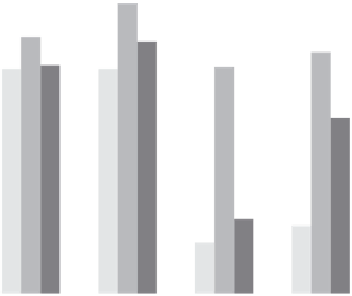Environmental Engineering Reference
In-Depth Information
progeny also produce more reproductive stems and fl owers (Figure 5.11). The simi-
larity in performance of self-pollinated and open-pollinated indicates that self-
pollination was the general rule at least in the circumstances of this experiment.
The results again reinforce the point that inbreeding depression can reduce the
chances of a successful conservation management program.
5.5.4
Outfoxing the
foxes of the
Californian Channel
Islands
DNA analysis can also be used to identify the closeness of the relationships among
different species or subspecies, producing information of use when managers need
to decide which populations are deserving of particular attention because of their
genetic distinctiveness. Figure 5.12 shows the relationships among subspecies of the
island fox
Urocyon littoralis
. Individual foxes are shown as lines, and those whose
DNA makeup is most similar branch closest together. For each island population,
and the mainland population, individual foxes are most closely related to others in
the same population. Among the island populations, those of San Miguel and Santa
Rosa are genetically very similar, while populations from the southern islands are
readily distinguishable from those in the northern islands. Because of this distinc-
tiveness, the northern and southern populations should not be mixed. On the other
hand, in response to the recent extinction of the fox population on San Miguel (due
to predation by a non-native eagle species), managers can reasonably decide to
translocate individuals from the closely related Santa Rosa population.
5.6
A broader
perspective of
conservation -
ecology, economics
and sociopolitics all
matter
You have seen how population viability analyses or genetic information can reveal
the likely benefi ts for population persistence of particular management actions.
However, in conservation, as in every area of life, action costs money. Some popula-
tions at greatest risk of extinction require huge recovery efforts with little chance
of success, while less threatened species might be secured relatively cheaply. Con-
servation managers have limited funds, so the process of prioritization for action is
critical, yet most often agencies simply allocate resources to species at highest risk
(Possingham et al., 2002). In desperate times, painful decisions have to be made
about priorities. Thus, wounded soldiers arriving at fi eld hospitals in the First World
War were subjected to a
triage
evaluation: Priority 1 - those who were likely to
survive but only with rapid intervention; Priority 2 - those who were likely to
survive without rapid intervention; Priority 3 - those who were likely to die with
or without intervention. Conservation managers are often faced with the same kind
Fig. 5.11
Percentage of
surviving
Silene
plants
that produced at least
one open fl ower during
a 3-year study.
'Outbred' individuals
derived from artifi cially
performed cross-
pollination always
performed better than
their more inbred
counterparts derived
from self-pollination.
Open-pollinated plants,
derived from unma-
nipulated parents that
had been naturally
pollinated by insects,
perform more like the
artifi cially self-
pollinated plants,
indicating that self-
pollination is naturally
more common. (After
Kephart, 2004.)
100
Open-pollinated
Cross-pollinated
Self-pollinated
90
80
70
60
50
40
30
20
Jun 1999
Aug 1999
May 2000
Jun 2001



























Search WWH ::

Custom Search